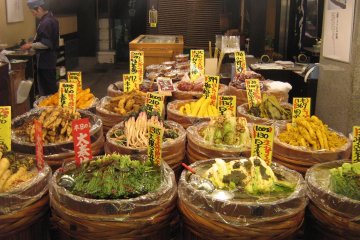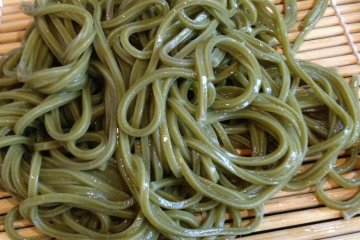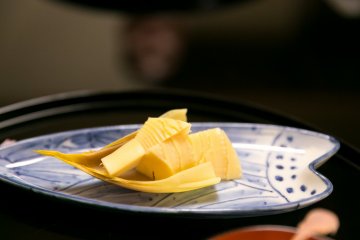Overview
With its refined and elegant heritage, Kyoto prefecture and its recognised cuisine offers some of the most exquisite culinary experiences in the nation. Foods prepared here take on the influence of a millennium of Imperial power and prestige and include simple pickled dishes based on rarefied traditions of preparation, seasonal shoots exhibiting the best of culinary timing and the sophisticated simplicity of green tea and soba. Add in Kyoto's world famous grand cuisine, and you have a prefecture that is justifiably in its own gastronomical world. Here is a simple guide to some of the regional cuisine of Kyoto.
Kyo-tsukemono
Served alongside almost every meal, it can be easy to overlook just how representative of Kyoto cuisine, Kyo-tsukemono are. Essentially pickled vegetables, Kyoto's famous accompaniments to meals are one of a kind. Pickled with a minimal amount of salt, these traditional bites rely on the inherent flavours of the vegetables for their effect.

Takenoko
A seasonal food if there ever was one, takenoko are young bamboo shoots and a decided speciality of Kyoto. Particularly well-matched with miso and peppers, fresh shoots are only available in the spring and are usually enjoyed as a simmered dish, freshly dug in the morning as sashimi or served with rice.

Cha soba
Originating with the famous matcha green teas of Uji, cha soba green tea buckwheat noodles are an iconic food in Kyoto. Eaten as either a warm or cold dish, these fresh tasting noodles embody a richly green tea hue, one suggestive of the depth of heritage that is unashamedly Kyoto.

Kaiseki ryori
No guide to food in Kyoto is complete without mentioning kaiseki ryori, Japan's world recognised haute cuisine. Continually evolving, this traditional multi-course meal is intimately intertwined with the nation's history, drawing influences from the Imperial court, Buddhist temple cuisine, samurai foods and the tea ceremony.












